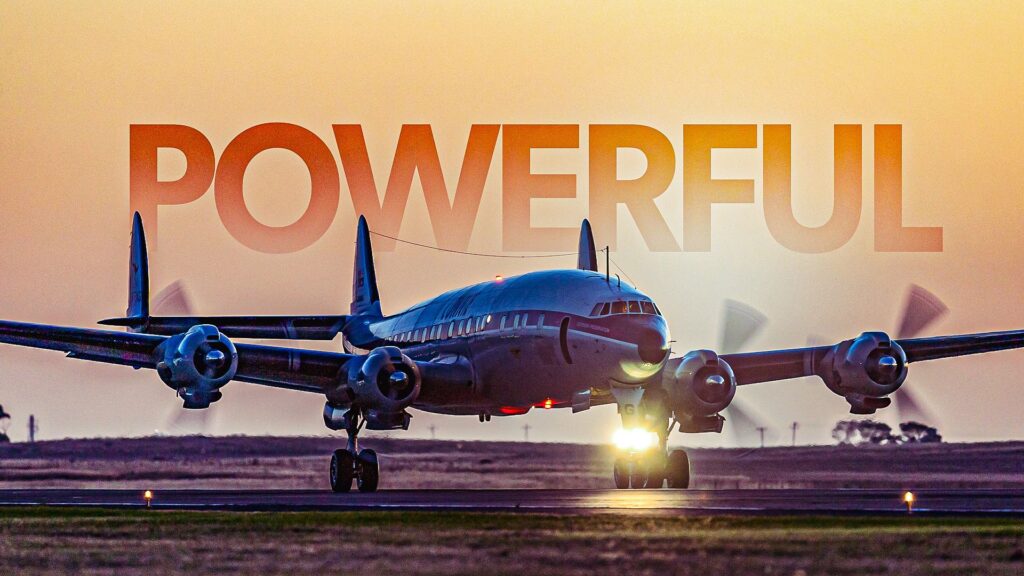
The Lockheed Constellation, affectionately known as “Connie,” is celebrated for its groundbreaking design and remarkable performance during the golden age of piston airliners. This aircraft not only showcased engineering excellence but also played a pivotal role in commercial and military aviation from the late 1940s into the 1950s. As the world transitioned into the jet age, the Constellation remained a powerful contender, thanks to its innovative technology and versatile applications.
A Historical Overview of the Lockheed Constellation
The conception of the Lockheed Constellation began in 1939 when Trans World Airlines (TWA) sought a long-range airliner capable of flying over 3,500 miles (5,600 kilometers). Despite the onset of World War II, renowned engineer Kelly Johnson and his team at Lockheed pressed forward with their vision. The prototype took to the skies for the first time on January 9, 1943, initially serving as a military transport under the designation C-69.
Once the war concluded, the Constellation transitioned into a civil airliner, with the L-049 entering service in late 1945, primarily with TWA. In total, 856 aircraft were produced between 1943 and 1958, establishing the Constellation as a symbol of long-haul flight. Its distinctive triple-tail and sleek fuselage defined post-war aviation, while multiple variants, such as the stretched L-1049 “Super Constellation,” enhanced its capabilities further.
The Constellation’s evolution is notable; it began as a military transport, became a commercial airliner, and then adapted again for various military roles. This adaptability underscored its robust performance and flexible design, making the aircraft a favorite among operators.
Powerful Variants and Engine Technology
To truly appreciate the capabilities of the Lockheed Constellation, one must consider the various variants and their respective improvements. The Constellation lineage expanded from the initial L-049 to the L-649, L-749, L-1049, and finally the L-1649 Starliner, alongside numerous military derivatives.
A significant aspect of the Constellation’s success lay in its engine technology. The Wright R-3350 Duplex-Cyclone engine was a game-changer, providing exceptional power and reliability. This 18-cylinder, twin-row, air-cooled radial engine had a displacement of approximately 3,350 cubic inches (55 liters) and delivered power ranging from 2,200 to over 3,500 horsepower, depending on the variant.
Particularly noteworthy was the turbo-compound version used in the later models, which incorporated power recovery turbines to enhance efficiency and performance. Reports indicate that the L-1049C variant achieved a top speed of around 370 mph (595 km/h) at altitude, showcasing the aircraft’s remarkable capabilities.
The R-3350 engine was not exclusive to the Constellation; it was also employed in various other prominent aircraft, including the Boeing B-29 Superfortress, Douglas DC-7, and Lockheed P-2 Neptune. This versatility emphasized the strength and adaptability of the engine platform, which helped solidify the Constellation’s reputation.
The Constellation’s engineering excellence extended beyond its engines. Variants like the L-749 and L-1049 were designed with larger fuel capacities and advanced aerodynamics, allowing for longer-range flights and improved operational efficiency. The aircraft became a preferred choice for airlines eager to establish transatlantic routes in the post-war era.
Airlines continued to favor the Constellation over emerging jet models for several reasons. Its performance, range, and reliability stood out during a time when jets were still in their infancy. The proven track record of the R-3350 engines further solidified confidence among operators, while the Constellation’s elegant design and comfortable pressurized cabin appealed to passengers.
Military applications of the Constellation also contributed to its popularity. Variants such as the C-121 and the WV/EC-121 were utilized for long-range transport and airborne early warning roles, demonstrating the aircraft’s adaptability across different operational contexts. This dual-use capability reinforced the Constellation’s standing in both civil and military aviation.
The Lockheed Constellation remains a significant milestone in aviation history. It encapsulates how propeller-driven aircraft combined power, sophistication, and practical design just as the industry transitioned to jet technology. The Constellation’s success story is not merely a tale of engineering; it reflects the broader context of aviation needs during a transformative period.
In summary, the Lockheed Constellation stands as a testament to innovative design and engineering prowess. Its powerful engines, flexible airframe, and impressive range allowed it to thrive in an era of rapid change. As aviation enthusiasts, engineers, and historians reflect on its legacy, the Constellation serves as a reminder of a time when piston-driven aircraft reached unparalleled heights, paving the way for the future of air travel.







